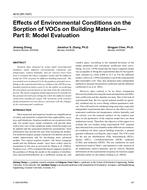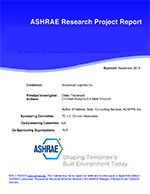Research into thermal comfort has employed three principal techniques: direct determination of preferred temperature, field surveys, and the use of rating scales in environmental chambers. The findings of the three methods are summarised and compared.
The three methods produce some contradictory results. The method of direct determination finds that individuals are very reliable, and that the preferred temperature of different groups of people is the same, whatever the general thermal experience of the group. Chamber studies, however, find people apparently much less reliable, and the results of field studies, which also employ rating scales, show that the neutral temperature of a group varies over a wide range, and can be predicted from a knowledge of the local climatic conditions.
This paper examines these discrepancies. Some are caused by the high "noise level" of the seven point scales in common use, and may be resolved statistically. The variation in the neutral temperature of a group may be partly explained by the fact that "neutral" temperature, as measured on a seven point scale, and "preferred" temperature found by the method of difect determination, are not in fact the same thing. The neutral temperature may be biased by experience. This has important implications for the optimum temperature setting in a building.
Citation: ASHRAE Transitions, Volume 84, Part 1, Atlanta, GA
Product Details
- Published:
- 1978
- Number of Pages:
- 9
- File Size:
- 1 file , 510 KB
- Product Code(s):
- D-AT-2475


